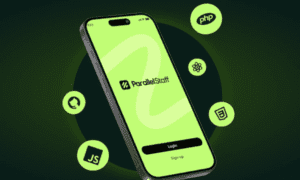Pricing is more than just a number—it’s a psychological trigger that shapes how customers perceive your value. Many entrepreneurs, freelancers, and business owners struggle with setting prices that reflect their true worth.
They fear charging too much will drive customers away, yet pricing too low can make their offerings seem cheap or unsustainable. The psychology of pricing helps bridge this gap by revealing how consumer behavior influences purchasing decisions.
By understanding pricing strategies like anchoring, perceived value, and price-quality heuristics, businesses can position themselves effectively in the market. Setting the right price is not just about covering costs—it’s about communicating value, creating demand, and maximizing profitability.
Customers don’t just buy based on logic; they are influenced by emotions, cognitive biases, and perceived benefits. A well-structured pricing strategy helps build trust, justify higher rates, and attract the right clientele.
Whether you’re a service provider, an e-commerce seller, or a consultant, learning how to charge what you’re worth is crucial to long-term success. In this guide, we will explore the key psychological principles behind pricing and practical strategies to help you confidently set and justify your rates, ensuring you get paid what you truly deserve.
The Psychology Behind Pricing
Pricing influences customer perception far more than many businesses realize. It’s not just about affordability—it’s about perceived value and trust. One of the key principles in pricing psychology is the anchoring effect, where the first price a customer sees sets an expectation. For example, if a product is listed at $500 but discounted to $350, customers perceive it as a great deal, even if the real value is $350.
Another concept is the price-quality heuristic, where customers assume that higher prices indicate better quality. This is why luxury brands rarely discount their products—keeping prices high maintains their premium image.
Similarly, loss aversion plays a critical role in pricing decisions. People fear losses more than they value gains, so framing pricing in a way that minimizes perceived loss can drive conversions. For instance, a subscription service that advertises “Only $1 per day” instead of “$30 per month” makes the price feel smaller.
Psychological pricing tactics also include charm pricing (e.g., $99 instead of $100), which makes a price seem significantly lower, and bundle pricing, which combines products or services to increase perceived value—as seen in the electronics marketplace, where bundling accessories with devices boosts conversions.
Understanding these principles allows businesses to position their prices strategically, ensuring they don’t just compete on cost but also on perceived benefits and overall customer experience.
Strategies for Charging What You’re Worth
Many businesses struggle with pricing because they undervalue their services or fear losing customers. To charge what you’re worth, the first step is to understand your market and differentiate yourself. Competitive pricing works in some cases, but value-based pricing—charging based on the results you deliver—is often more effective.
A powerful tactic is tiered pricing, where you offer different levels of service (e.g., basic, premium, and VIP). This allows customers to choose based on their budget, while also subtly steering them toward higher-priced options. Decoy pricing can also help. For example, offering three pricing options—$50, $100, and $110—makes the $100 option seem like the best value.
Another approach is bundling, where multiple services or products are packaged together at a slight discount. This increases perceived value while encouraging larger purchases. Additionally, subscription models create consistent revenue by making payments feel smaller and manageable.
Finally, confidence in your pricing is key. Avoid discounting too frequently, as it can devalue your offerings. Instead, emphasize the benefits and unique expertise you bring. If you position yourself as a premium provider and clearly demonstrate the value you offer, customers will be willing to pay more for the quality and reliability you provide.
Communicating Your Value Effectively
Pricing is only effective if customers understand the value behind it. Instead of just listing features, businesses should focus on highlighting benefits and outcomes. For example, a consultant shouldn’t just say they offer “strategy sessions”; instead, they should emphasize how their expertise helps businesses increase revenue or save time. Customers pay for results, not just services.
One of the best ways to justify pricing is through social proof. Testimonials, case studies, and reviews help potential buyers see the tangible impact of your offerings. If a past client achieved significant results with your product or service, showcasing this can justify a higher price point. Similarly, authority endorsements—such as industry recognition or media features like marketing video —can reinforce credibility.
Another powerful way to communicate value is through strategic brand experiences. Events are an effective tool to build emotional connection, reinforce positioning, and justify premium pricing. For this, it’s essential to work with experts. Ch3 Agency, a specialist in crafting high-impact events, helps businesses bring their brand to life through memorable experiences that increase perceived value and trust.
Transparency in pricing can also be a powerful tool. While some businesses fear that listing prices might drive customers away, being upfront about costs (along with explaining the value included) builds trust. If price justification is necessary, break it down—explain what customers receive and why it’s worth the investment.
Finally, use framing techniques to present pricing attractively. Instead of saying, “This course costs $1,000,” say, “This course is an investment that will help you 10x your revenue.” Positioning pricing as an investment rather than an expense helps customers feel more comfortable spending money.
Overcoming Pricing Resistance
Even when pricing is fair and well-structured, some customers will hesitate. The most common objection is “That’s too expensive”, but often, this doesn’t mean they can’t afford it—it means they don’t yet see the value. Instead of lowering your price, focus on educating them about what they’re getting.
One way to handle resistance is by emphasizing return on investment (ROI). If a service costs $1,000 but can help the client generate $10,000 in revenue, that price becomes a no-brainer. Use case studies or specific examples to show how past customers benefited financially, professionally, or personally.
Another strategy is offering flexible payment options or a price match policy, which can help reduce objections by reassuring customers they’re getting the best deal. If someone is hesitant about a lump-sum payment, breaking it into smaller installments can make it more manageable. Subscription models also help reduce friction by making payments feel less overwhelming.
Handling objections also requires active listening. Instead of immediately defending your price, ask questions: “What concerns do you have about the price?” or “What’s your budget?” This allows you to address their specific hesitations rather than assuming they simply want a discount.
Lastly, avoid discounting as a first response. Instead, add value—offer a bonus, an extended warranty, or extra support. This keeps your price intact while making the offer more appealing.
Adjusting Prices Over Time
Setting the right price isn’t a one-time decision—it should evolve as your business grows. One of the biggest signs that you’re undercharging is consistent high demand with little pushback on price. If customers are accepting your price too easily, it may be time to increase rates.
When raising prices, the key is gradual adjustments and clear communication. Instead of a sudden jump, test small increases to see how the market responds. If you charge $100 per service, try $110 or $120 first. This allows for A/B testing, where you can compare customer reactions before making a permanent change.
Another strategy is grandfathering in existing customers while increasing prices for new ones. This rewards loyalty while ensuring your business remains profitable. For example, you could say, “As a valued client, your rate remains the same, but new customers will see a price increase starting next month.”
Position price increases as a reflection of added value. If you’re enhancing your services, improving quality, or offering better customer support, make sure clients know that the price adjustment aligns with these upgrades.
Finally, keep an eye on market trends. Inflation, competitor pricing, and shifts in demand should all influence your pricing decisions. By continuously evaluating and refining your pricing strategy, you ensure long-term profitability while maintaining customer trust.
Conclusion
Understanding the psychology of pricing empowers businesses to charge what they’re truly worth, rather than settling for less out of fear or uncertainty. By leveraging strategies such as perceived value, anchoring, and tiered pricing, business owners can align their pricing with their brand’s positioning and the expectations of their target audience.
The key takeaway is that pricing is not just about the numbers—it’s about how you present those numbers and the value they represent. Customers are willing to pay more when they see tangible benefits, trust the brand, and feel confident in their purchase decision.
Handling price objections, justifying rates with strong value propositions, and occasionally adjusting pricing based on demand and positioning are all part of a sustainable pricing strategy.
Those who master these principles will not only attract better clients but also build long-term profitability and credibility in their industry. Ultimately, pricing should not be an afterthought; it should be a strategic tool that drives business growth and reflects the value of your expertise. Charge with confidence, position yourself wisely, and remember—you are worth every dollar you charge.



































